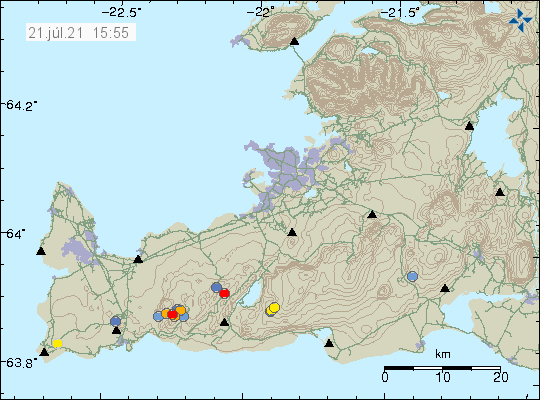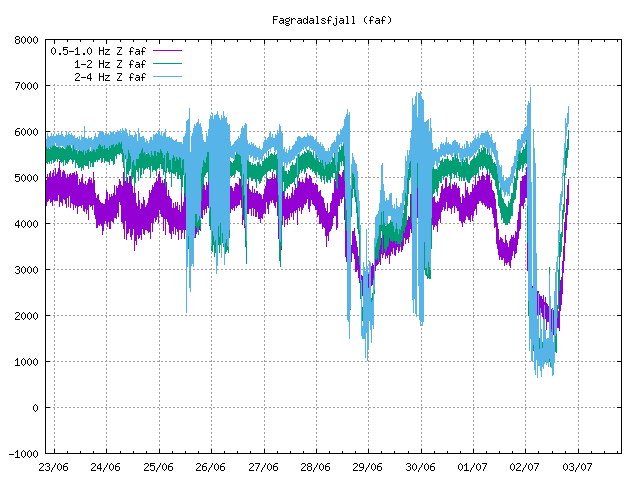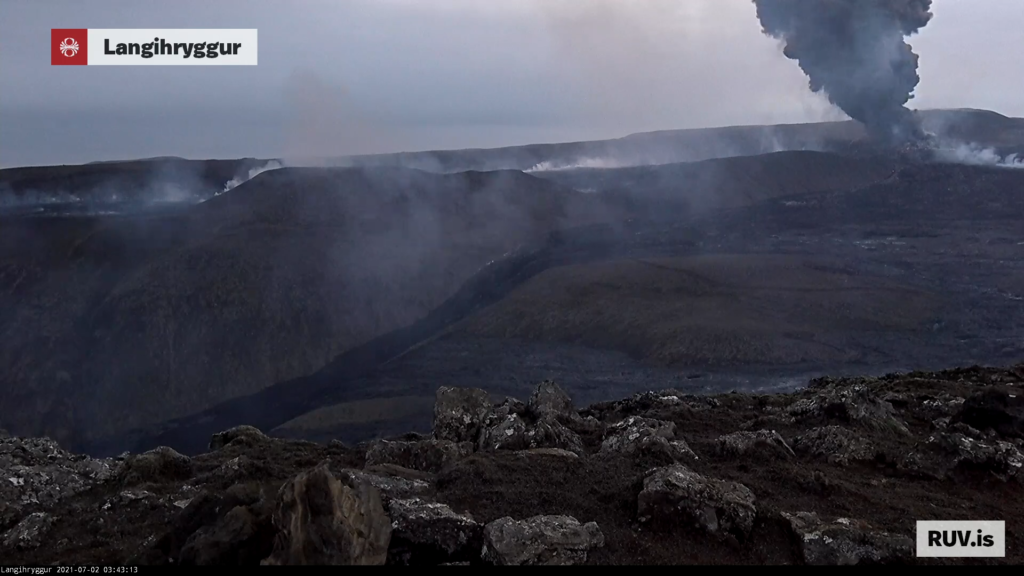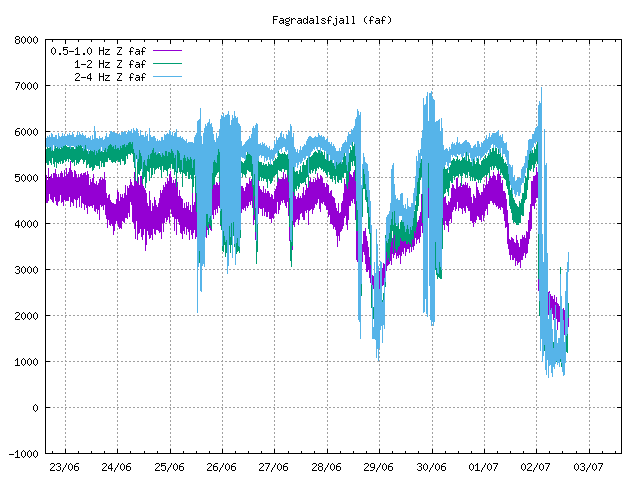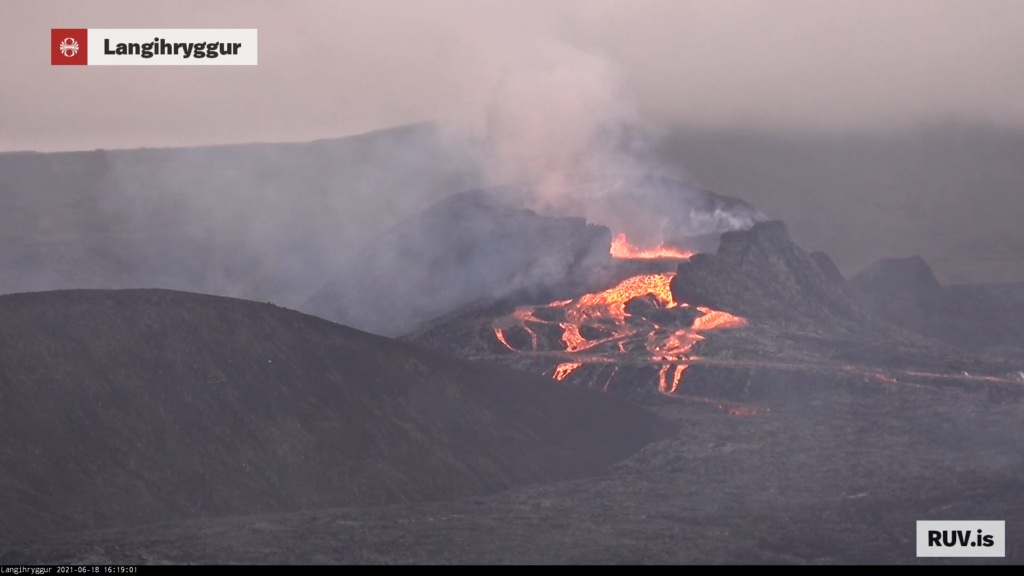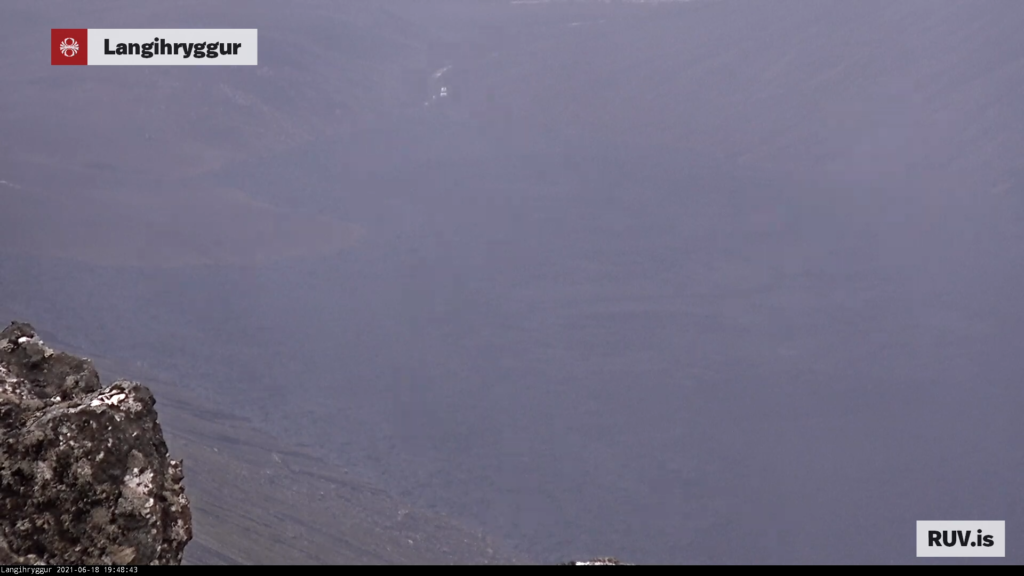This is a short update on the eruption in Sundhnúkagígar in Svartsengi volcano.
- The eruption is now the longest eruption in Svartsengi volcano since this eruption cycle started on 18. December 2023.
- There are five to seven craters erupting at the writing of this article. Bad weather has blocked the view to the eruption site for most of yesterday and today (22. March 2024).
- The outflow of lava, based on my own estimate (that might be wrong) is that the flow is around 20m3/sec. Its not a lot at the moment and that means the lava flow goes shorter distances.
- Large lava ponds have formed and those empty regularly, resulting in a fast moving flow of lava going down to any area downhill from the eruption.
- One person working at the be Blue Lagoon got sick from SO2 poisoning on 20. March 2024. That person did go to a hospital and is now recovering fine, according to the news.
- A gravel mine got filled with lava yesterday (21. March 2024) when the lava pond broke and emptied it self.
- Bad weather makes it difficult to monitor the eruption. Next good weather won’t be until Saturday (23. March 2024).
- Early GPS data however suggest that there is not much of a deflation or inflation happening in Svartsengi volcano. That means the magma is flowing directly to the eruption and making minimal stop on the way to the surface.
This is all for now. Next update is going to be when something new happens. If this eruption is going to last for a long time. I’ll post regular updates on it. But for now, this eruption is just going to continue as is now doing.

